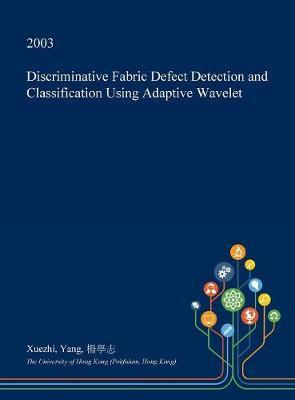Overview
This dissertation, Discriminative Fabric Defect Detection and Classification Using Adaptive Wavelet by Xuezhi, Yang, 楊學志, was obtained from The University of Hong Kong (Pokfulam, Hong Kong) and is being sold pursuant to Creative Commons: Attribution 3.0 Hong Kong License. The content of this dissertation has not been altered in any way. We have altered the formatting in order to facilitate the ease of printing and reading of the dissertation. All rights not granted by the above license are retained by the author. Abstract: Abstract of thesis entitled Discriminative Fabric Defect Detection and Classification Using Adaptive Wavelet Submitted by YANGXueZhi for the degree of Doctor of Philosophy at The University of Hong Kong in June 2003 This thesis develops an adaptive wavelet-based methodology which offers greater accuracy in fabric defect detection and classification than standard wavelet methods. This methodology uses wavelet transform, which can provide localized spatial-frequency analysis of the fabric image at several scales and orientations, and can discern fabric defects better than many traditional methods. In order to achieve shift-invariant representation and greater flexibility in the design of the wavelet, undecimated wavelet transform is proposed. Channel variances at the output of the undecimated wavelet transform are extracted to characterize each non-overlapping window of the fabric image. A Euclidean distance-based classifier then categorizes each image window as either defect or nondefect for the purpose of fabric defect detection, or assigns it to one of the defect categories for the purpose of fabric defect classification. Within the wavelet transform framework, we propose a design method which adapts the wavelets to the detection/classification of the fabric defects. These custom-designed wavelets are called adaptive wavelets. Traditionally, the designs of the feature extractor and the detector/classifier in a defect detection/classification system are only loosely linked, so that they are incapable of appropriate interaction. To alleviate this problem, the design of the adaptive wavelet-based feature extractoris incorporated with the design of the detector/classifier, with the single aim of achieving a minimum error rate in detection/classification. The proposed defect detection method has been evaluated on 841 defect samples from eight classes of defects, and 784 nondefect samples. A 96.1% detection rate and a 1.02% false alarm rate were achieved. The evaluations were also carried out on types of defects unknown to the designed feature extractor and detector. In the detection of 174 defect samples from three types of defects and 786 nondefect samples, a 90.8% detection rate and a 6.4% false alarm rate were achieved. Adaptive wavelets are better at detecting defects than standard wavelets, and need fewer scales of wavelet features, resulting in substantial computational savings. The proposed defect classification method has also been shown to outperform classification methods relying on the standard wavelets. In the classification of 466 defect samples containing eight classes of fabric defects and 434 nondefect samples, a 95.8% classification accuracy was achieved by our proposed method. We also explore the possibility of extending the scope by employing multiple instead of single adaptive wavelets. For each class of fabric defect, a defect-specific adaptive wavelet was designed to enhance the defect region at one channel of the wavelet transform. Multiple adaptive wavelets achieved better results than single adaptive wavelet in the inspection of 56 images containing eight classes of fabric defects, and 64 images without defects. A 98.2% detection rate and a 1.5% false alarm rate were achieved in defect detection, and a 97.5% classification accuracy was achieved in defect classification. DOI: 10.5353/th_b2991340 Subjects: Textile fabrics - TestingWavelets (M
Full Product Details
Author: Xuezhi Yang ,
楊學志
Publisher: Open Dissertation Press
Imprint: Open Dissertation Press
Dimensions:
Width: 21.60cm
, Height: 1.40cm
, Length: 27.90cm
Weight: 0.816kg
ISBN: 9781374725522
ISBN 10: 1374725528
Publication Date: 27 January 2017
Audience:
General/trade
,
General
Format: Hardback
Publisher's Status: Active
Availability: Temporarily unavailable

The supplier advises that this item is temporarily unavailable. It will be ordered for you and placed on backorder. Once it does come back in stock, we will ship it out to you.



